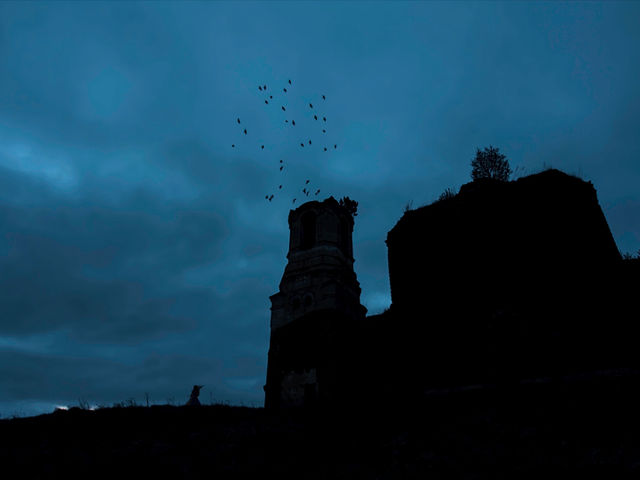The Return of the Monster
For a while, monsters were out of fashion. Vampires had been softened into teen romance (Twilight), werewolves turned into sidekicks, and Dracula himself drifted into parody. Horror in the 2010s and early 2020s went “elevated”: slow-burn dread, trauma metaphors, and arthouse scares. But something’s shifted. Monsters are back—not the sparkling, sanitized versions, but the old-world, folkloric creatures that haunt both imagination and geography.
Why? Because monsters embody something deeper than jump scares. They’re about fear tied to place. Dracula isn’t just a vampire—he’s Transylvania’s misty castles and Carpathian forests. Werewolves aren’t just shape-shifters—they’re the terror of wild woods under a full moon. In a noisy, digital world, people are craving tangible myths again, and monsters are the perfect vessels.

Why Monsters Still Matter
- Folklore Rooted: Unlike invented horror tropes, monsters emerge from centuries of cultural storytelling — they feel lived-in, not manufactured.
- Geography Matters: Monsters are tied to place. You can’t separate Dracula from Eastern Europe, or werewolves from forests and moors.
- Cultural Catharsis: Monsters give form to universal fears — the outsider, the beast within, the unknown wilderness — making them endlessly adaptable.
- Nostalgia & Renewal: With Hollywood circling back to Dracula, Frankenstein, and Wolfman reboots, we’re reentering a gothic cycle that blends nostalgia with fresh relevance.
Nosferatu & the Count That Won’t Die
Before Bela Lugosi or Christopher Lee, it was Nosferatu (1922) that brought Dracula to the screen—though under the altered name “Count Orlok” after Bram Stoker’s estate refused the copyrights. The film’s expressionist shadows, jagged architecture, and Orlok’s monstrous figure gave us the first true horror icon. A century later, Nosferatu still haunts cinema: with Robert Eggers’ highly anticipated remake on the way, the monster is returning to mainstream culture not as romance, but as pure gothic dread.
For travelers, Nosferatu adds another layer. Fans trace filming sites in Germany (like Lübeck and Wismar), while others chase the broader Dracula legend in Romania’s Transylvania—where Bran Castle and the Carpathian forests fuel the imagination. What Nosferatu reminds us is that Dracula isn’t just a character—he’s a landscape of mist, castles, and shadows. That’s why he keeps coming back.
Werewolves: Fear of the Wild
Werewolves reflect the primal fear of wilderness—the idea that nature transforms us when the moon rises. From medieval Europe’s wolf hunts to modern folklore tours in Germany, France, and the Balkans, the werewolf story has always been about borders between civilization and the wild. With renewed fascination in folklore-driven horror (and even series like The Witcher), werewolves are reemerging not as cheesy tropes but as symbols of untamed nature—and travel to forests, moors, and mountain villages resonates more than ever.
New Monsters for a New Era: Enter Art the Clown
Monsters evolve with the times, and the rise of Art the Clown from the Terrifier films proves it. Where Dracula embodied old-world dread and werewolves symbolized fear of the wilderness, Art is pure nihilism—a monster born of meme culture, gore obsession, and the internet age’s appetite for shock.
He isn’t tied to ancient folklore, but he feels folkloric in the making: a traveling figure of chaos who could just as easily be whispered about like an urban legend. And like Dracula or the werewolf, he’s inseparable from place—seedy carnivals, abandoned warehouses, and backroads America.
Art the Clown shows that monsters aren’t static. They’re cultural weather vanes. And their travel footprint shifts too: Transylvania and Bavarian forests may be the classic pilgrimage sites, but modern horror fans chase filming locations for Terrifier, haunted houses, and contemporary dark tourism spots just as fervently.

Monsters and Modern Travel
Monsters aren’t just in books and movies. They’re tied to place-based myth that can shape how we travel:
- Romania: Castles, forests, and towns tied to Dracula lore.
- French & German forests: Once feared as werewolf-haunted — now atmospheric hiking grounds.
- Mexico & Latin America: El Chupacabra and La Llorona show how monster myths adapt globally.
- U.S. Appalachia: Mothman, Jersey Devil, and regional cryptids carry the same energy — blending local lore with travel intrigue.
But monsters today aren’t only about folklore—they’re also fueling modern tourism and attractions. Universal Studios has doubled down on year-round horror with permanent “Dark Universe” concepts and Halloween Horror Nights drawing global crowds. Las Vegas is opening year-round horror venues where guests can walk through immersive sets tied to films and original monsters. Haunted houses, scream parks, and horror festivals have gone from seasonal gimmicks to travel-worthy destinations in their own right.
For travelers, this means you can now experience monsters on multiple levels: hike the forests that inspired legends, tour the castles that birthed Dracula myths, or step into curated nightmares at modern attractions that turn folklore into full immersion.

Did You Know?
- Vlad the Impaler, the real-life figure tied to Dracula, never lived in Bran Castle (the “Dracula Castle”) — but its gothic architecture fit the myth so perfectly it became canon.
- French werewolf trials in the 16th century treated lycanthropy as a real crime — blurring law, superstition, and folklore.
- Many monster myths doubled as survival warnings: don’t go into the forest alone, don’t wander at night, don’t break community rules.
Why Airial Embraces the Gothic Comeback
Travel is always about story—and monsters are some of humanity’s oldest. Airial makes it easy to go beyond surface-level trips into journeys shaped by legend: castles at dusk, forests by moonlight, and towns where folklore lingers.
